INFLUENCE OF STABILIZATION OF AMPAS AMUGANCES IN LANDSIDE OF LEMPUNG TREATED WITH TRIAXIAL TOOLS
here is the result of research I did on clay soil that originated in one area of aceh, the land I stabilize the clay soil using bagasse ash, welcome to read and hopefully useful for the area around you steemit friend.
The purpose of this experiment is to get the value of shear stress parameter ie cohesion (c) and angle (φ) by visualizing mohr circle graph.
the following are the materials used for this research:
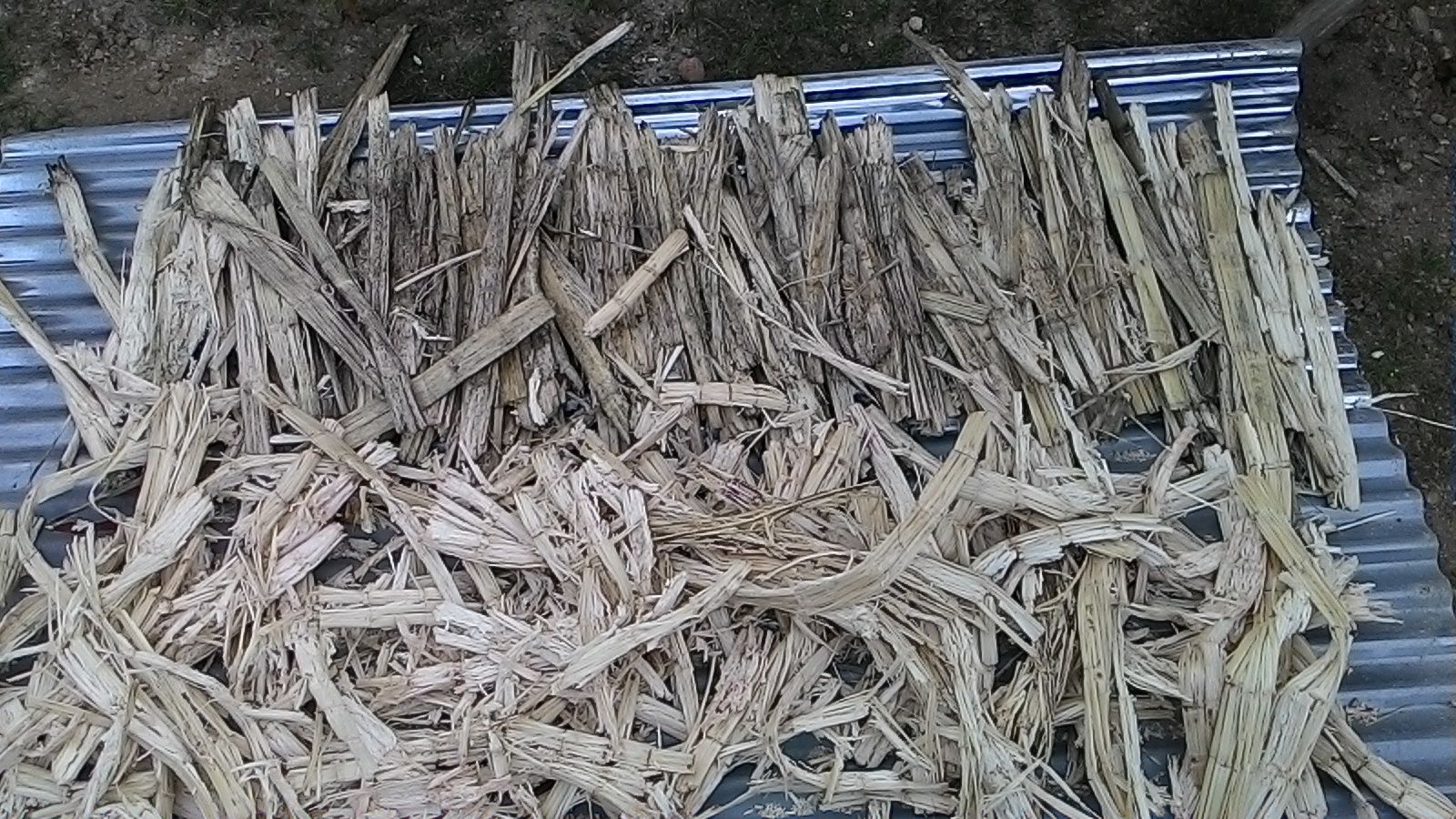
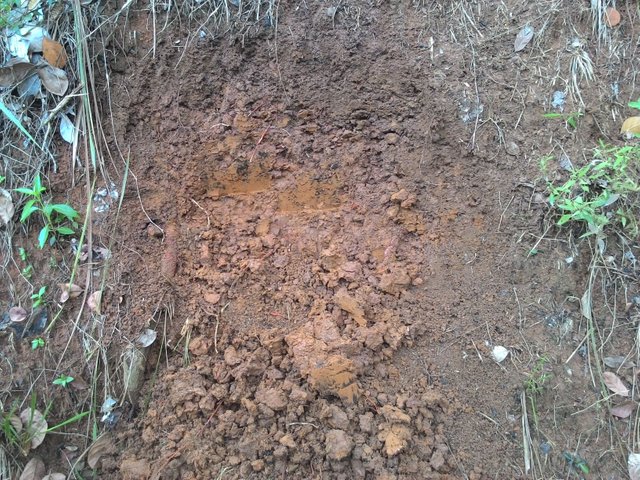
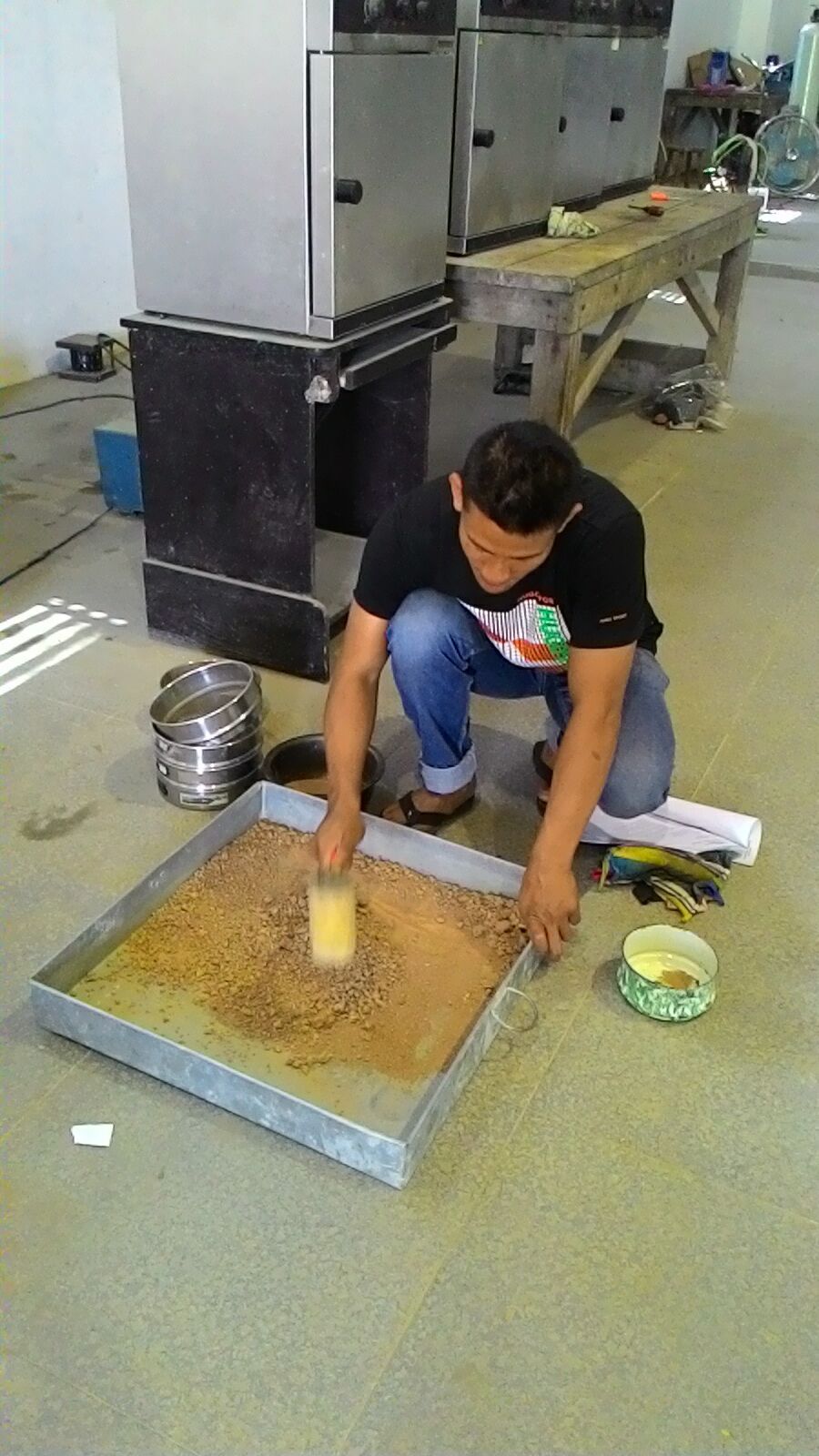
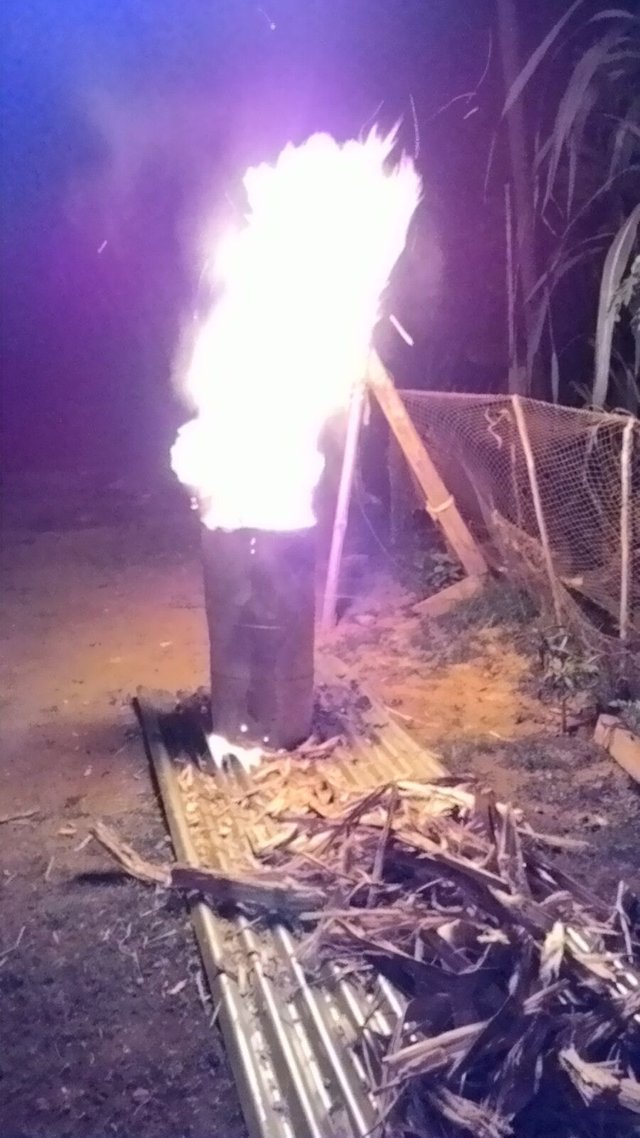
What is the test procedure is as follows:
- Take 3 pieces of sample from the proctor, print with sample printing equipment so that the shape of a cylinder.
- Scales each sample and look for volume weight.
- Reservoir must be full, cover all the faucets and check all the connections to the pore voltage measuring plane, if the tube containing mercury contain air bubbles then it should be avoided (must be issued) because it will affect the measurement of pore pressure.
- Open the tube valve that connects the triaxial device with the pore water urtain device.
- Open the buret valve for water from the burette to enter the channel to the triaxial apparatus.
- Close the buret valve when the porous stone is saturated water.
- Place the filter paper over the porous stone.
- Insert the rubber membrane into the stetcher, then run the vacuum pump so that the rubber membrane attaches to the diding in the stetcher.
- Put the sample in the stetcher and the membrane is connected.
- Place the glass cylinder over the sample and place the pressing grain that will continue the sample pressure on the glass cylinder.
- Install the chamber, tighten all three, then the valve at the top of the chamber.
- Fill the chamber with water so it's full, until the voltage is equal to zero, then close the valve.
- Let the soil consolidate first, dial gauge and null indicator first zeroed by adjusting the screw control so that the mercury height in the buret remains.
- Close faucet pore pressure gauge.
- Run the triaxial plane by running the engine motor so that the sample gets a vertical voltage with a drop speed of up to 2%.
- Perform a reading of the gauge gauge and the pore water voltage per minute and the mercury is set to remain in position until a collapse occurs ie the dial gauge shows the number tetep.
- Turn off the engine, null indicator is zeroed.
- Not a water reservoir faucet (open the upper chamber valve), water will come out.
- Open the chamber, then remove the soil sample and pore stones.
Variation of Mixed Materials For Triaxial Test:
- Soil + 10% bagasse ash
- Soil + 15% ash bagasse
- Soil + 20% ash bagasse
image of a specimen using triaxsial tools:
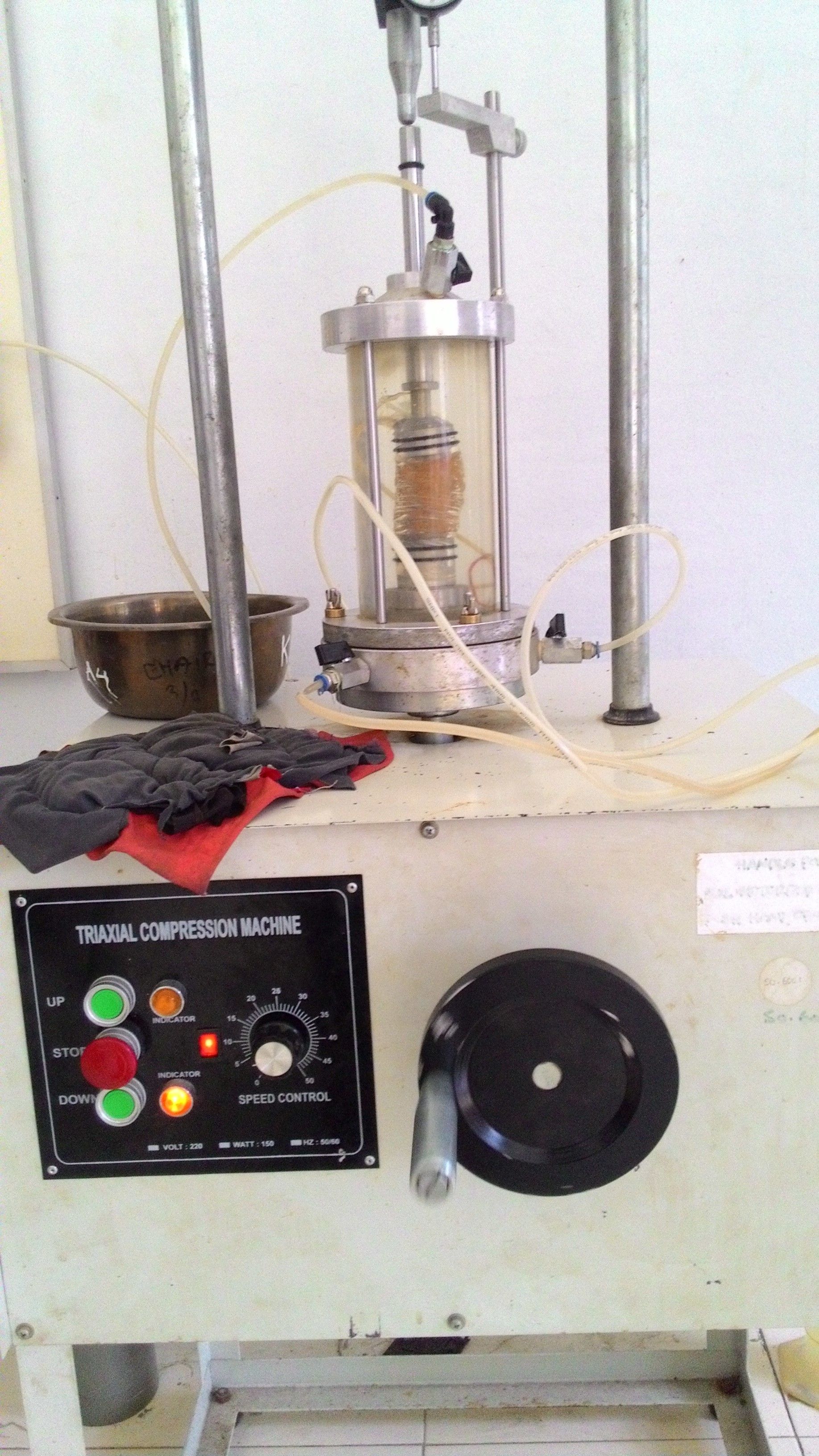
Triaxial Test results Act
From the results that have been obtained in the table above, then obtained graph shear angle (ɸ) and variation of powder of bagasse (%) obtained from triaxial test presented in Figure 4.8 below:

Results obtained on triaxsial testing, on a variation of 10% bagasse ash was obtained with a sliding angle of 22 ° with a cohesive value of 0.29 kg / cm2.
hopefully useful and can be a science for steemit friends.
Thank you very much.
You do an excellent job, caring for others. Thank you.
hihihi. he is alike, thank you for giving the votes and comments.
thanks a lot @ ludmila63.
I follow us always.
Thank you, I'll follow you, too.
Pu Hasil tameng lap wate skripsi ?
hahahah kira2 menan lah